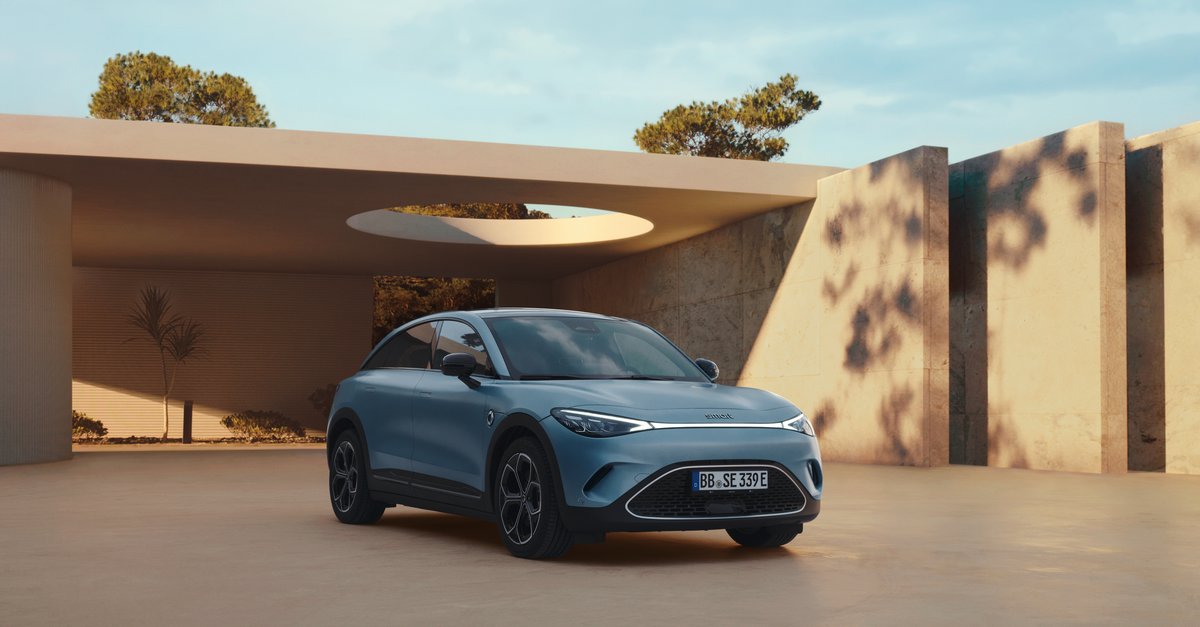How the “Tesla of e-bikes” slid into bankruptcy
Vanmoof had to file for bankruptcy after 14 years. Even if the company has galloped, we can thank the people of Amsterdam because, among other things, the company has helped make e-bikes cool. It was only years after the first Vanmoof models that manufacturers such as Cowboy, Ampler and Veloretti entered the arena with their pedelec models.
Vanmoof founders Ties and Taco Carlier. (Photo: Vanmoof)
The manufacturer, founded in 2009 by Taco and Ties Carlier and based in Amsterdam, initially only had bicycles without an electric drive in its portfolio, but already with the distinctive frame design. In 2014, parallel to the classic bicycles, the 10 Electrified model was the first model with an electric motor. But it could be understood more as a test run, since there were only 200 copies of it.
With the Electrified S, S2 and X2, the successive manufacturer completed the turn to a pure e-bike manufacturer, with the S3 and X3 models intended to reach the masses.
Editor’s Recommendations
The increasingly networked bikes were not only characterized by their recognizable frames, but also had GPS for location, an anti-theft device and other smart functions on board. Especially for tech-savvy cyclists, one of the highlights is the connection to a smartphone app, which can be used to view the location of the bike, the routes covered and more.
Another typical feature is the so-called kicklock, with which the bikes can be locked with a kick against a bolt on the rear wheel. The bike could be easily unlocked by approaching the rider with a connected smartphone.
The manufacturer was initially successful with the chic bikes: sales increased according to Business Insider from twelve million US dollars in 2018 to almost 48 million dollars in 2019. With the models Vanmoof S3 (test) and X3, the manufacturer wanted to open a new chapter in 2020 and grow massively.
With the S3/X3 models, the manufacturer has increasingly relied on the development of its own, i.e. proprietary, components and thus had to rely less on suppliers. In this way, Vanmoof was able to reduce sales prices by almost 40 percent to sell the bikes for under 2,000 euros. The manufacturer mainly relied on direct sales for sales, so that customers could only purchase the bicycles via the website.
First, the low sales price and from 2020 the corona pandemic – which caused a massive boom in the entire bike market – played into the manufacturer’s hands. At the end of 2020, the company announced great successes, including on the German market.
Not only customers felt attracted to the popular e-bike brand Vanmoof, but also numerous investors, who raised the company in several financing rounds within two years with almost 190 million dollars (source: crunch base) showered. Vanmoof received the largest investment round in early September 2021 with $128 million. In the course of this, the manufacturer proudly announced that it wanted to “reinvent every component of the bicycle”.
But at that point, Vanmoof was no longer doing so well. Rumors say that the manufacturer has been in deficit for years and, among other things, had running costs that were too high. According to the Dutch financial newspaper, Vanmoof generated sales of 83 million euros in 2021, but at the same time made a loss of 78 million euros.
In addition to a large number of employees – was last We’re talking about around 700 – Vanmoof made massive losses, mainly due to quality problems with its e-bikes. In 2021 alone, the costs for repairs or the replacement of Vanmoof e-bikes under the guarantee amounted to an impressive eight million euros.
Owners of a Vanmoof bike should be able to sing a song about their defective e-bikes. In addition, customers who did not live in Berlin or near one of the now closed service hubs either had to send their bikes in or drive hundreds of kilometers through Germany.
Because repair shops are so scarce, Vanmoof owners have sometimes had to wait months for their repaired bike. In addition, customers complained about the extremely poor accessibility – Reddit is full of such stories. Ultimately, Vanmoof bike owners could hope and pray to survive a season without a trip to the workshop.
Industry experts have previously assumed that Vanmoof would have massive problems. Because of the increased use of proprietary components instead of standard parts, it was not possible for the bike workshop around the corner to repair a Vanmoof bike. Vanmoof did not give out spare parts to third parties anyway.
The exclusive direct sales model is also viewed as problematic. However, other companies are also pursuing this, although the competitor Cowboy, for example, has now said goodbye to it.
As already mentioned, the lack of a broader, regional service coverage is also one of Vanmoof’s massive mistakes. The manufacturer had announced again this year that it would set up a network of retail and service partnerships. It seems a bit late for that now. If the manufacturer were to save itself from bankruptcy, the expansion of the after-sales area would probably be an important factor.
Vanmoof is also accused of bringing immature products onto the market. Probably the clearest example is the automatic four-speed gearbox, which rattles and jumps wildly between third and fourth gear when driving quickly. In the case of the successors S4 and S5, Vanmoof finally opted for two or three gears.
Across from Techcrunch A bike industry insider explained that Vanmoof has also focused too much on marketing and has spent a lot of money to get as much exposure as possible – the company even spent a lot of money on TV advertising.
At the same time, the company forgot to “think about the supply chain and unit costs,” according to the insider. He also said Vanmoof was “sitting on a lot of incorrect inventory and over-ordering” due to delivery delays caused by the coronavirus pandemic.
Several factors played a role in the Vanmoof insolvency, which steered the company out of business after 14 years of existence. In summary, since the S3 and X3 models, the company had wanted to grow massively too quickly, relying on its stash of venture capital and its reputation.
However, other relevant factors such as after-sales and service must not be forgotten for healthy growth – especially if you rely on proprietary components. Other e-bike manufacturers should use Vanmoof’s bankruptcy as a cautionary tale and try not to make the same mistakes.
Even if Vanmoof’s branches outside the Netherlands are not part of the bankruptcy, it is currently uncertain what will happen next. Among other things, the company is trying to find a buyer so that it can continue operations. Vanmoof bike owners should take a look at our guide.


